Whether you grow your cucumber plants in a garden, raised beds, containers or straw bales, with just a few simple tips, you can have your plants growing like crazy – and have your best harvest ever this year!
Who doesn’t want to get the most from their cucumber plants? After all, a good crop means more cucumbers for fresh eating. And of course, for making all kinds of delicious homemade pickles!
But cucumbers can be a tricky crop to grow for sure. In addition to being susceptible to mildew, wilt, and other disease, pest can take a toll as well. Especially when it comes to fighting off the dreaded cucumber beetle.
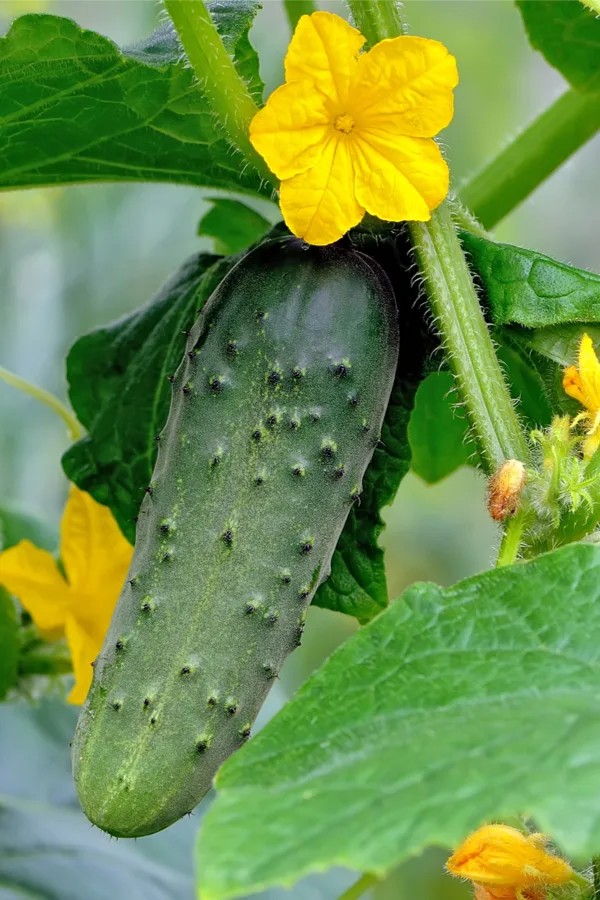
But it just so happens that the best way to fight off both disease and pests is to simply keep your plants as strong and healthy as possible, right from the start.
Unfortunately, weak plants become an easy target for both issues. Not to mention, weak plants are far less productive when harvest time rolls around.
So how do you keep those plants healthy and thriving? Well, no matter how or where you grow, it really boils down to the following three key tips!
3 Secrets To Growing Great Cucumber Plants
#1 Consistent Water – How To Grow Cucumber Plants Like Crazy!
It’s plain and simple, cucumber plants love water! In fact, the slender long fruits are actually made up of nearly 95% water! And that means they need a steady supply of it to produce as many cucumbers as possible.
Cucumber plants are one of the first plants to dry out, whether it be in a garden or container setting. Their vines, stems and foliage all begin to wilt quickly when water is in short supply.
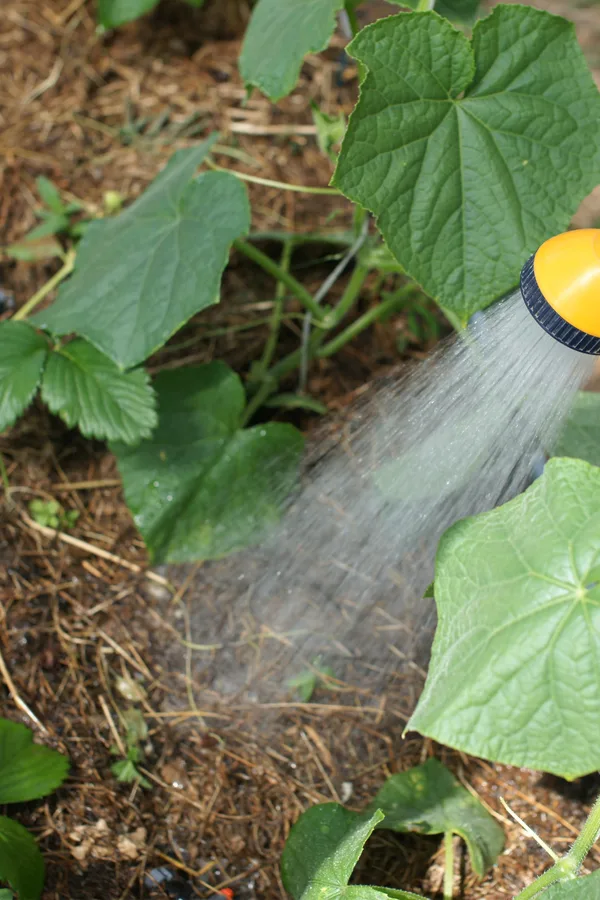
Unfortunately, wilting is more than just unsightly. It also causes serious stress to the plants, and to future bloom and fruit production levels. But even more, it makes them that much more susceptible to attack from disease and pests. (See : Protecting Cucumber Plants From Mildew and Beetles)
Watering Right
So how much water do your plants need when for growing great cucumber plants? Most vegetable plants (tomatoes, peppers, corn, etc.) can survive and thrive on 1″ per week of water. But cucumbers need nearly double that at around 2″ for maximum health and production.
That means watering plants 2 to 3 times per week when rain isn’t falling. And even more for container grown cukes. As for how much water for each plant, a general rule of thumb is 1/4 to a 1/2 gallon of water per plant, per watering.
Don’t Forget The Mulch
Beyond watering, make sure that your cucumber plants are mulched as well. A few inches of straw or grass clippings underneath cucumber plants will help to retain valuable moisture in the roots of the plants.
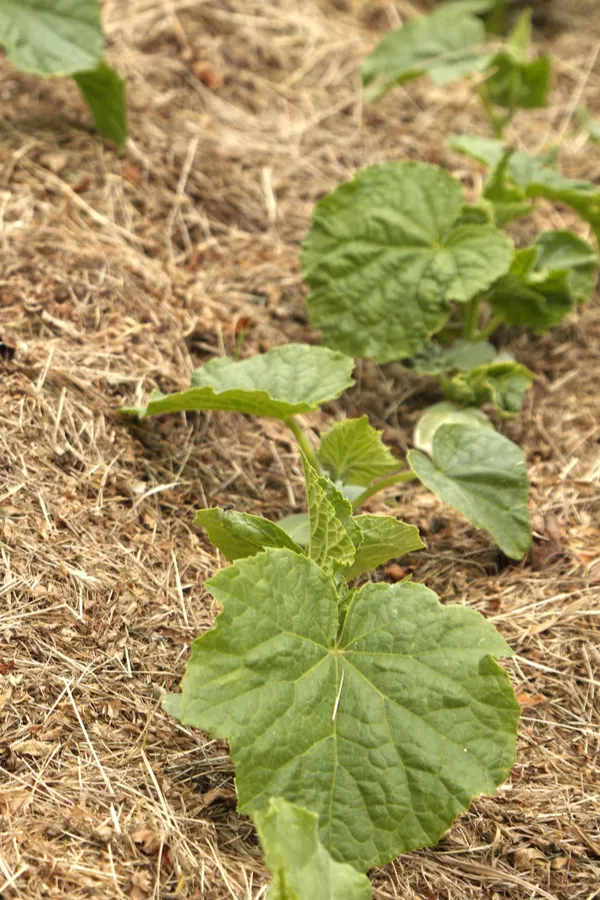
Even more, mulch helps to suppress weeds. Unfortunately, weeds take nutrients from the soil too. And weeds beneath your cucumber plants can easily steal quite a lot of potential production away.
Finally, when it comes to watering, as with nearly everything in life, too much of a good thing can be bad. Be careful not to over-water. Too much water will lead to yellowing of the foliage, and can cause mildew and other issues.
Always check the soil before watering for moisture. Inexpensive soil moisture meters are great for this, or you can simply check with your finger a few inches down in the soil to see if it’s dry or not. If it’s wet, there is no need to add more water.
#2 The Importance Of Fertilizing – How To Grow Cucumber Plants Like Crazy!
Beyond proper water, fertilizing is a huge and vital key to success for growing cucumbers. Cucumbers, like many common garden crops, need a steady of supply of nutrients to thrive.
Check out our Podcast on Growing Cucumbers!
Unfortunately, even the best soil begins to lose those nutrients as plants grow. This happens in garden soil, and even more so when planted in containers or raised beds. And when energy become scarce, plants simply can’t grow to their full potential.
And that is exactly where fertilizing plants with a steady, slow dose of nutrients will make all the difference when it comes to growing a big crop of cucumbers.
Cucumber plants need a small dose of fertilizer every 10 to 14 days for maximum growth and production. The best way to do this is by using liquid versions that absorb via the roots and foliage.
Picking The Right Fertilizer
Compost tea, worm casting tea, or a high-quality soluble organic fertilizer are all excellent choices when it comes to fertilizing plants. Fertilize plants every 10 to 14 days for the first 8 to 12 weeks to promote strong growth, and bigger yields. (Product Link : Performance Organics Water Soluble Fertilizer)
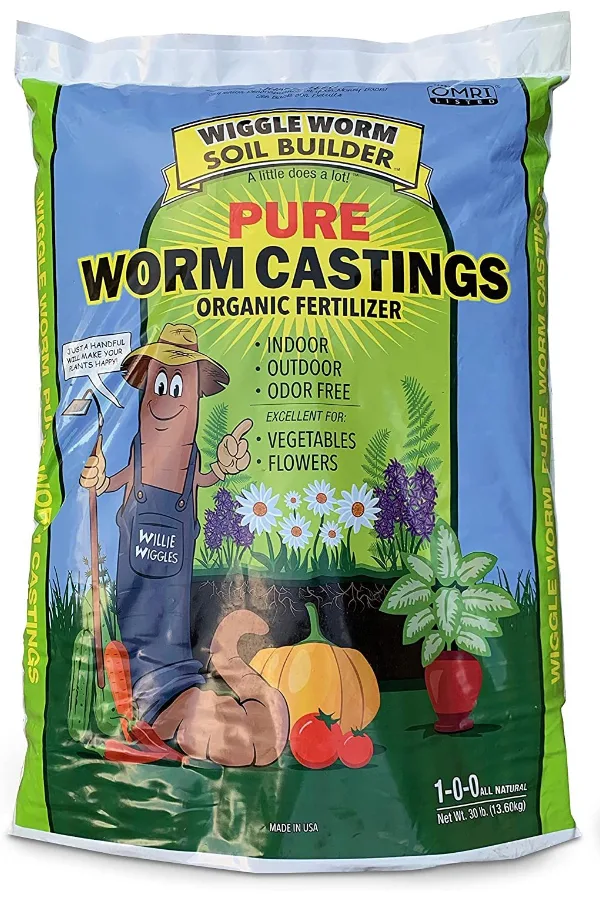
As with watering, too much of of a good thing can be harmful when it comes to fertilizing. Over-fertilizing leads to excessive foliage growth with little to zero blooms. Remember, slow and steady is the key to success!
#3 Keep Your Crop Well Picked – How To Grow Cucumber Plants Like Crazy!
Finally, one of the most important things you can do to have a big crop is to pick your cucumbers early and often! In fact, the easiest way to slow or even stop cucumber production is by allowing fruit to stay on the vine too long.
When overloaded with too many cucumbers, or when too many fruits are left to grow excessively large on a vine, the plant stops using energy to produce new blooms and fruit in order to continue growing the existing fruit larger.
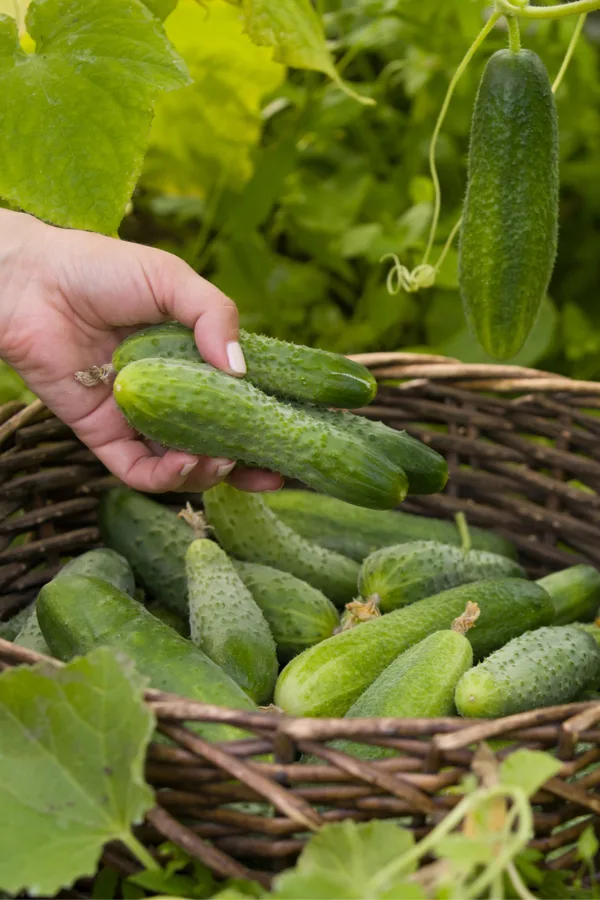
And we all know that over-sized cucumbers are not the tastiest of fruits! Pick early and often to keep plants producing at their maximum levels all summer long. The more you pick, the more chance you have more blooms and more great cucumbers!
Here is to getting the most out of growing your cucumber plants this year – and to a record harvest! And if you are looking for some great pickle recipes for all of those cucumbers, check out our Pickle Recipe Page on the site. Happy Gardening – Jim and Mary.
Jim and Mary Competti have been writing gardening, DIY and recipe articles and books for over 15 years from their 46 acre Ohio farm. The two are frequent speakers on all things gardening and love to travel in their spare time.
As always, feel free to email us at thefarm@owgarden.com with comments, questions, or to simply say hello! You can sign up for our free email list in the subscribe now box in the middle of this article. Follow us on Facebook here : OWG Facebook. This article may contain affiliate links.
